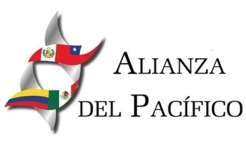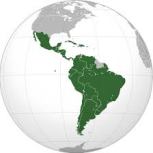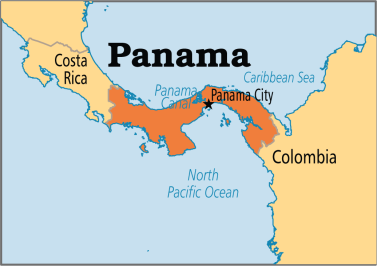Latin America
The new El Dorado of the world economy
Colombia, Chile, Peru, Mexico
European exporters to growing markets
 Latin America! More and more companies are looking with interest to Latin America and almost always with good reason. Here’s a close look on a continent that has yet to offer many opportunities for Italian exporters.
Latin America! More and more companies are looking with interest to Latin America and almost always with good reason. Here’s a close look on a continent that has yet to offer many opportunities for Italian exporters.
In recent years in Latin America countries such as Colombia, Chile, Peru and Mexico, have gained a leading position and claim a more important role in the world economy. To what extent can Swiss companies benefit from their ambitions?
Latin America is a growing market with excellent prospects. Witness also the data of the Swiss export economy: in 2012 the Red Cross exports, not only to Latin America. grew by 10% and in 2013 by 6.4%. These are record values in the current comparison. However, economic development does not follow the same trend in all countries. On the one hand there is the Pacific Alliance with Mexico, Costa Rica, Colombia, Peru and Chile as full members. This alliance brings together, as it were, the liberal economic forces in Latin America. On the other side we find the Mercosur, with Brazil, Argentina, Uruguay, Paraguay and Venezuela, which is opposed to the Pacific Alliance for its protectionist orientation. The largest differences between these two economic blocks are found in the growth of GDP in 2012; gross domestic product of the Pacific Alliance increased by 4.6%, or two and a half times compared to Brazil’s economy by far the strongest among the states of Mercosur. The disparities are also particularly evident in exports. In 2012 the countries of the Pacific Alliance have exported goods to the value of $545 billion dollars, while Brazil only $ 243 billion. For example, only Mexico 50% more of Brazil. Mexico, in fact, not only produces for its domestic market and manages to be very competitive on the world market, which of course is reflected on the dynamics of growth.
Mexico, the locomotive, “Chile, the first class” The actor stronger in terms of economic potential in the framework of the Pacific Alliance is Mexico, in which the future would benefit even better and with this potential stability. To this end, however, it must first reduce its dependence on the United States. Seventy-five percent of Mexican exports are directed to its great northern neighbor. It is a concentrated risk that Mexico wants to evade, with a greater orientation toward the south, or to South America, and to the west, or to Asia. To keep the economic trend of recent years, Mexico and other states of the Pacific Alliance must invest even more in infrastructure, especially in transport networks, whose construction in mountainous areas on the western Andean slope presents many difficulties. A task which seems made for Swiss suppliers. In most countries huge investments are also required in the fields of mining, in health care, in energy supply, water management and waste disposal. Namely classical infrastructures whose quality ultimately determines the direction in which to continue the economic development in the countries of the Pacific Alliance and, in general, of Latin America.
framework of the Pacific Alliance is Mexico, in which the future would benefit even better and with this potential stability. To this end, however, it must first reduce its dependence on the United States. Seventy-five percent of Mexican exports are directed to its great northern neighbor. It is a concentrated risk that Mexico wants to evade, with a greater orientation toward the south, or to South America, and to the west, or to Asia. To keep the economic trend of recent years, Mexico and other states of the Pacific Alliance must invest even more in infrastructure, especially in transport networks, whose construction in mountainous areas on the western Andean slope presents many difficulties. A task which seems made for Swiss suppliers. In most countries huge investments are also required in the fields of mining, in health care, in energy supply, water management and waste disposal. Namely classical infrastructures whose quality ultimately determines the direction in which to continue the economic development in the countries of the Pacific Alliance and, in general, of Latin America.
 Switzerland, for example, has signed a bilateral free trade agreement with all countries of the Pacific Alliance. Even with Chile, which, thanks to the political and economic stability and good growth rate (5.6% in 2012), associated with the low level of inflation and reduced debt, is confirmed as the first of the Latin American class. Despite the relatively small size of the market, Chile is increasingly appreciated by European SMEs as a gateway or test market for South America by virtue of the investment friendly climate and the ease of access to the market.
Switzerland, for example, has signed a bilateral free trade agreement with all countries of the Pacific Alliance. Even with Chile, which, thanks to the political and economic stability and good growth rate (5.6% in 2012), associated with the low level of inflation and reduced debt, is confirmed as the first of the Latin American class. Despite the relatively small size of the market, Chile is increasingly appreciated by European SMEs as a gateway or test market for South America by virtue of the investment friendly climate and the ease of access to the market.
In all countries there is a strong demand for innovation and cutting edge technology, to increase efficiency and economic productivity. Moreover, in Latin America the trend is toward very strong consumption. In the face of rising incomes there is also a growing demand for better living standards and the demand for high quality products, these needs can only be met by imports from abroad.
The euphoria on the Pacific Alliance is to the detriment of Brazil and Argentina. What are the strengths of these two countries?
Despite the boom in the countries of the Pacific Alliance, Brazil continues to be the most important player in South America in economic terms. It should be noted that Brazil is the sixth world economy, although in 2013 the GDP grew by a modest 0.9%. However for 2014 it is expected to recover with an increase in earnings of 2.6%. The pressure exerted by civil society is of little weight in this area. The social unrest of the last few months, in fact, were triggered primarily by deficiencies in public transport and health services that can only be solved if in the coming years, Brazil will invest heavily in medical infrastructure and public transportation. At the same time we must do everything possible to increase productivity, such as targeted measures against the bureaucracy that rules prevails in the country.
Brazil and Argentina, the giants of the market In 2014, as the host country of the World Cup, Brazil is the center of attention in the world. Argentina – Brazil presidential and parliamentary elections that are scheduled for next October will attract international attention. In addition, many targeted investments are aimed to conquer the electorate, but that should continue even after the elections, to dispel the danger of another wave of protests. 2016 will be followed by another mega event, the Olympic Games. Brazil, therefore, can’t afford to pull the oars in the coming years. To make a good impression in front of the rest of the world and not fall behind the competition in their own continent, the giant must focus more than ever on investments.
center of attention in the world. Argentina – Brazil presidential and parliamentary elections that are scheduled for next October will attract international attention. In addition, many targeted investments are aimed to conquer the electorate, but that should continue even after the elections, to dispel the danger of another wave of protests. 2016 will be followed by another mega event, the Olympic Games. Brazil, therefore, can’t afford to pull the oars in the coming years. To make a good impression in front of the rest of the world and not fall behind the competition in their own continent, the giant must focus more than ever on investments.
As we have seen, in Latin America there are two coalitions. An interesting scenario. On the one hand there are the giants Brazil and Argentina. Here it should be noted in particular the potential market for consumer goods offered by the country of Samba, with its 200 million inhabitants and the expanding middle class. Unfortunately, Brazil is a very complex market with many obstacles to access, high taxes and high costs paid by the undertaking (cost of doing business) and because of an excessive bureaucracy where protectionism is prevalent. The same is true for Argentina which, with 40 million inhabitants, has a smaller market and less lively in terms of purchasing power compared to Brazil, but to make it less competitive. However, on the business with Argentina adversely affect the restrictions on foreign trade under President Cristina Fernández de Kirchner has become even more stringent.
On the other side we have the smaller countries of the Pacific Alliance, who can’ hold a candle to Brazil in terms of size, but they have on their side easier access to the market and a more open liberal economic system. Establishing a company in Chile, for example, is much easier than in the countries of Mercosur.
 In a nutshell: for those who is on markets by large numbers and are able to deal with administrative obstacles above, Brazil is the right choice. Those who considered it important, easy access to the market, and to make the first experiences in South America and is looking for an entrance that can be used as a hub or test market should move towards the countries of the Pacific Alliance.
In a nutshell: for those who is on markets by large numbers and are able to deal with administrative obstacles above, Brazil is the right choice. Those who considered it important, easy access to the market, and to make the first experiences in South America and is looking for an entrance that can be used as a hub or test market should move towards the countries of the Pacific Alliance.
What Uruguay has to offer?
Uruguay is small, with just over three million inhabitants, but is conveniently located between Brazil and Argentina, the two giants of the Mercosur. But, above all, Uruguay is by far the most liberal and open country economically among all the states of the “Common Market of the South.”
Uruguay, the jewel Economic charts rank Uruguay in first place, or at least in the first three, among the Southern Latin American countries. In practice, it is at the same level of Chile, the most virtuous of the continent. Here is what it has to offer. Uruguay: a small cohesive market, and therefore easy to penetrate. Two million people, in fact, live in the capital, Montevideo, or its suburbs. At the same time in Uruguay there are, in progress or planned, many large projects designed to better position the country, which is still heavily dependent on agriculture, such as square industry, particularly for the mining sector and services in the financial and IT.
Latin American countries. In practice, it is at the same level of Chile, the most virtuous of the continent. Here is what it has to offer. Uruguay: a small cohesive market, and therefore easy to penetrate. Two million people, in fact, live in the capital, Montevideo, or its suburbs. At the same time in Uruguay there are, in progress or planned, many large projects designed to better position the country, which is still heavily dependent on agriculture, such as square industry, particularly for the mining sector and services in the financial and IT.
At first glance, the countries of Central America do not appear to be the primary destination for European SMEs. Nevertheless, with certain strategies and in some situations, the readiness of the international market towards Central America may make sense: to export samples that have already covered more markets, for example, in countries such as Panama or Costa Rica with a relatively high complementary per capita income is definitely interesting.
Central America – wide variety of small-scale  Even a hub in Panama is convenient, especially from a logistical standpoint. The country is politically stable and offers a huge advantage because the
Even a hub in Panama is convenient, especially from a logistical standpoint. The country is politically stable and offers a huge advantage because the currency local currency – the Panama Canal – Panamanian balboa, is tied to the dollar. Or follow a systematic strategy, a niche, pointing to unexplored segments, where the product offered is not yet on the market. Of course, the market potential is not comparable to that of Brazil, but in return the margins are higher in the absence of competition. At last but not least, the countries with low wages such as Nicaragua are increasing including production plants ideal for high density areas of labor, thanks to numerous free trade areas.
currency local currency – the Panama Canal – Panamanian balboa, is tied to the dollar. Or follow a systematic strategy, a niche, pointing to unexplored segments, where the product offered is not yet on the market. Of course, the market potential is not comparable to that of Brazil, but in return the margins are higher in the absence of competition. At last but not least, the countries with low wages such as Nicaragua are increasing including production plants ideal for high density areas of labor, thanks to numerous free trade areas.
Latin America has the strength and dynamism as well as the political and economic stability necessary to continue to grow in the long term? The answer is’ yes, but you can’t give a summary response. More than 20  countries of the continent are too different from each other in size, economic strength or history. Take for example Brazil. The country is at a crossroads. In terms of economic development is a big step forward compared to other South American states? The claims of the population have never been so high. Expectations for the country as a business and industrial center grow from year to year. And the whole world is watching. The World Cup, the Olympics, as well as the growing economic status or BRICS, all places, obligations and responsibilities, primarily with regard to better positioning in the international economy. Because, in the long run, no state can survive only with domestic trade and consumption, even Brazil. The only way to progress is to open and liberalize the market further, invest more in infrastructure and improve productivity. The prospects of this are optimistic or at the very least not negative. The Brazilian government has understood the sign of the times. Over the next two years we will see if it will also be able to draw the right lesson.
countries of the continent are too different from each other in size, economic strength or history. Take for example Brazil. The country is at a crossroads. In terms of economic development is a big step forward compared to other South American states? The claims of the population have never been so high. Expectations for the country as a business and industrial center grow from year to year. And the whole world is watching. The World Cup, the Olympics, as well as the growing economic status or BRICS, all places, obligations and responsibilities, primarily with regard to better positioning in the international economy. Because, in the long run, no state can survive only with domestic trade and consumption, even Brazil. The only way to progress is to open and liberalize the market further, invest more in infrastructure and improve productivity. The prospects of this are optimistic or at the very least not negative. The Brazilian government has understood the sign of the times. Over the next two years we will see if it will also be able to draw the right lesson.
 For states of the Pacific Alliance, in particular, it is expected a very promising future. For almost twenty years it has been politically stable. However, they are still a number of measures to increase the added value in the long term. In other words, Latin America should not focus solely on the export of raw materials, but rather invest in a sustainable way in the development of industries and services. Especially in view of a more important role in the world economy and in the creation of additional jobs to ensure economic, political and social stability. This process is already under way and should be pursued further.
For states of the Pacific Alliance, in particular, it is expected a very promising future. For almost twenty years it has been politically stable. However, they are still a number of measures to increase the added value in the long term. In other words, Latin America should not focus solely on the export of raw materials, but rather invest in a sustainable way in the development of industries and services. Especially in view of a more important role in the world economy and in the creation of additional jobs to ensure economic, political and social stability. This process is already under way and should be pursued further.
Alessandro Sicuro
by sure-com America
click on the pictures for slideshow⬇︎



















